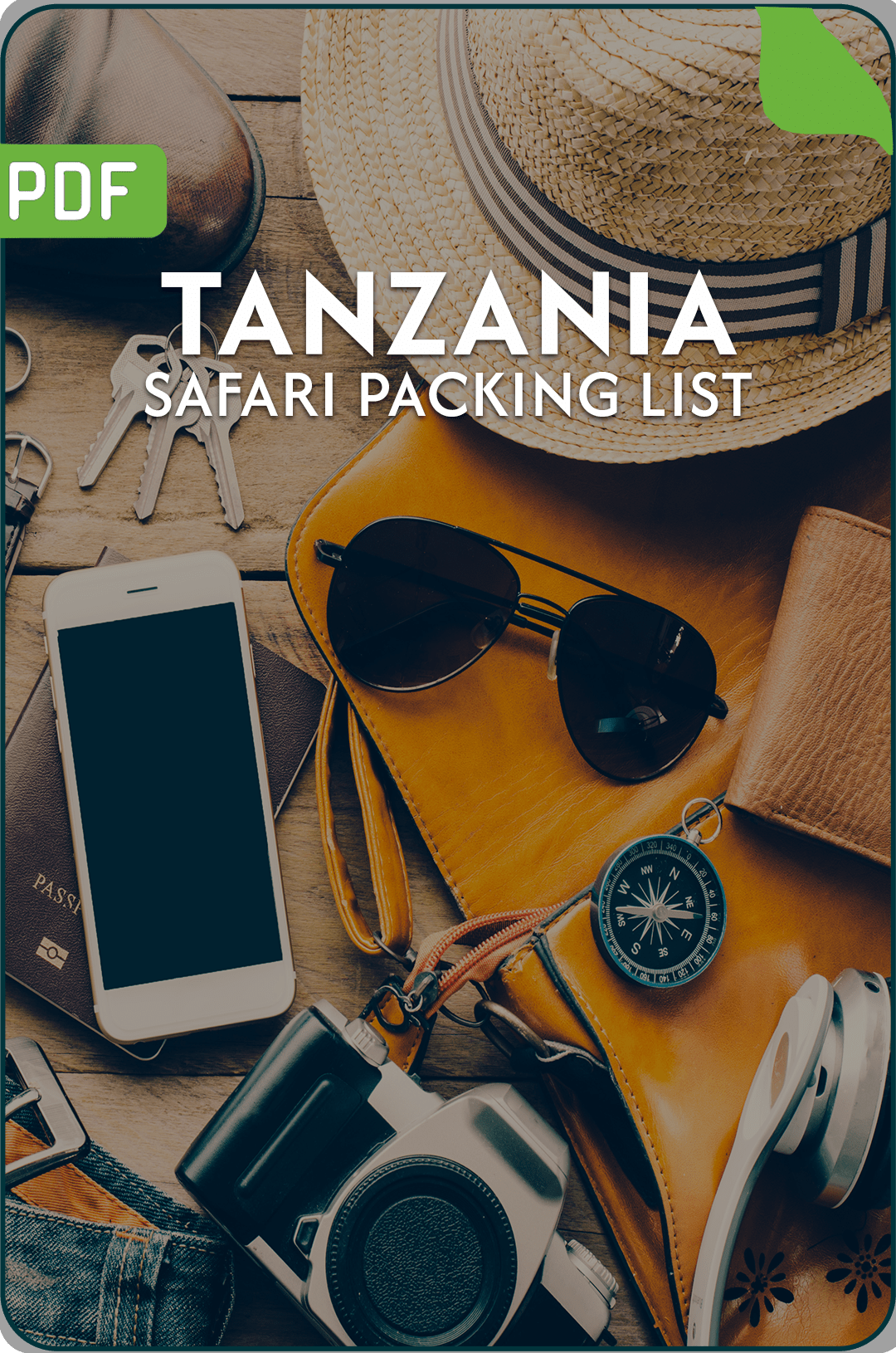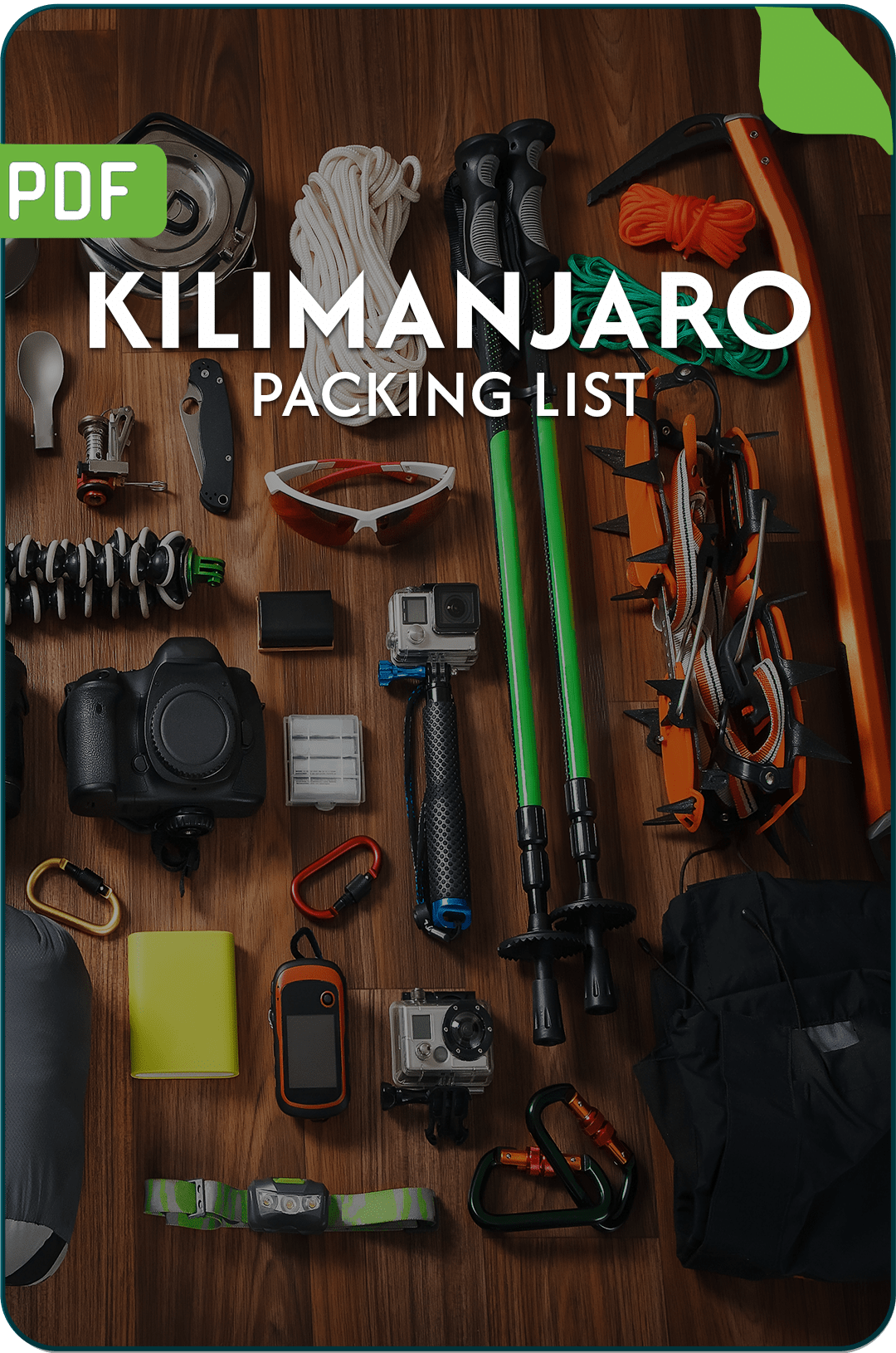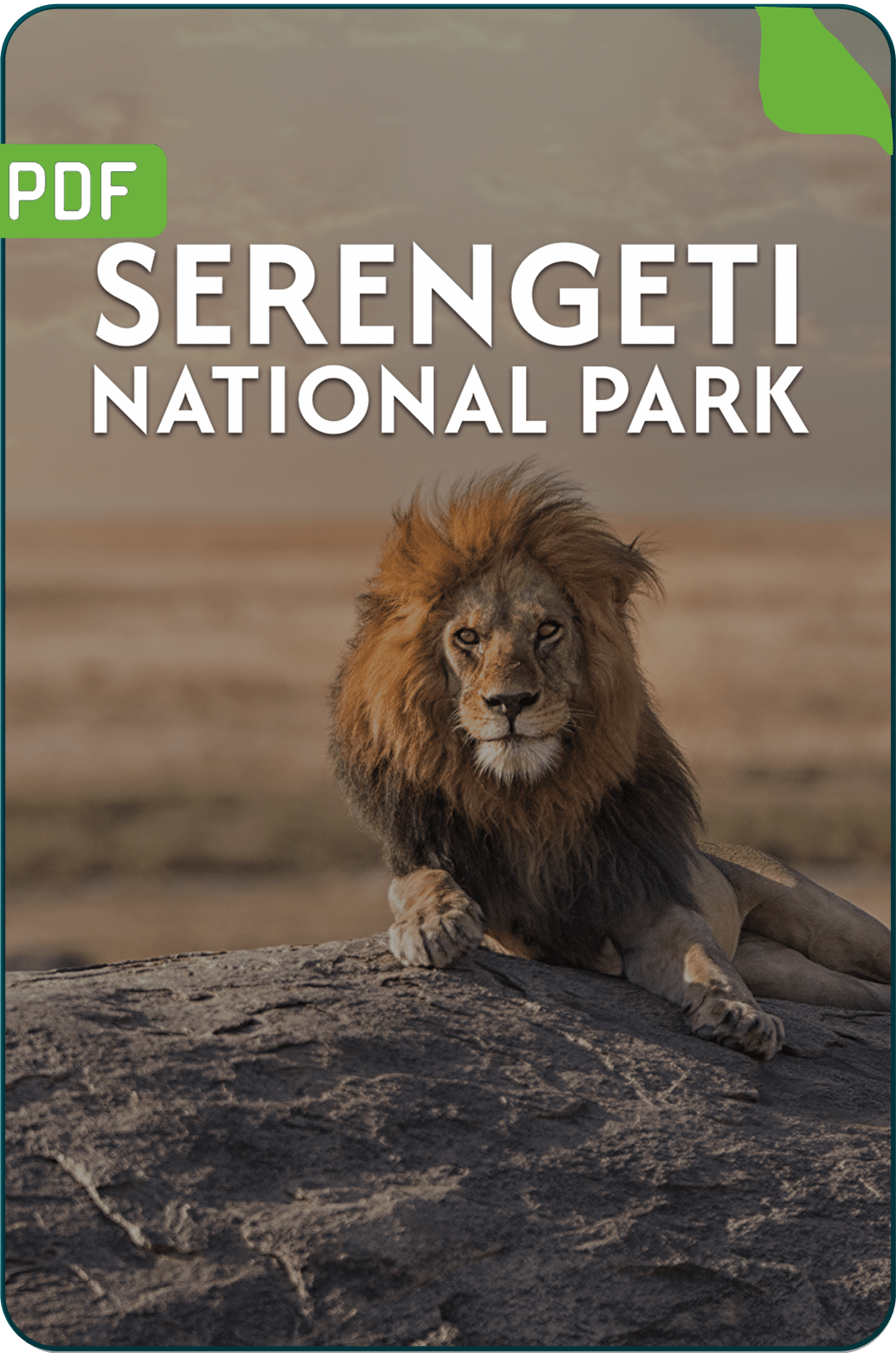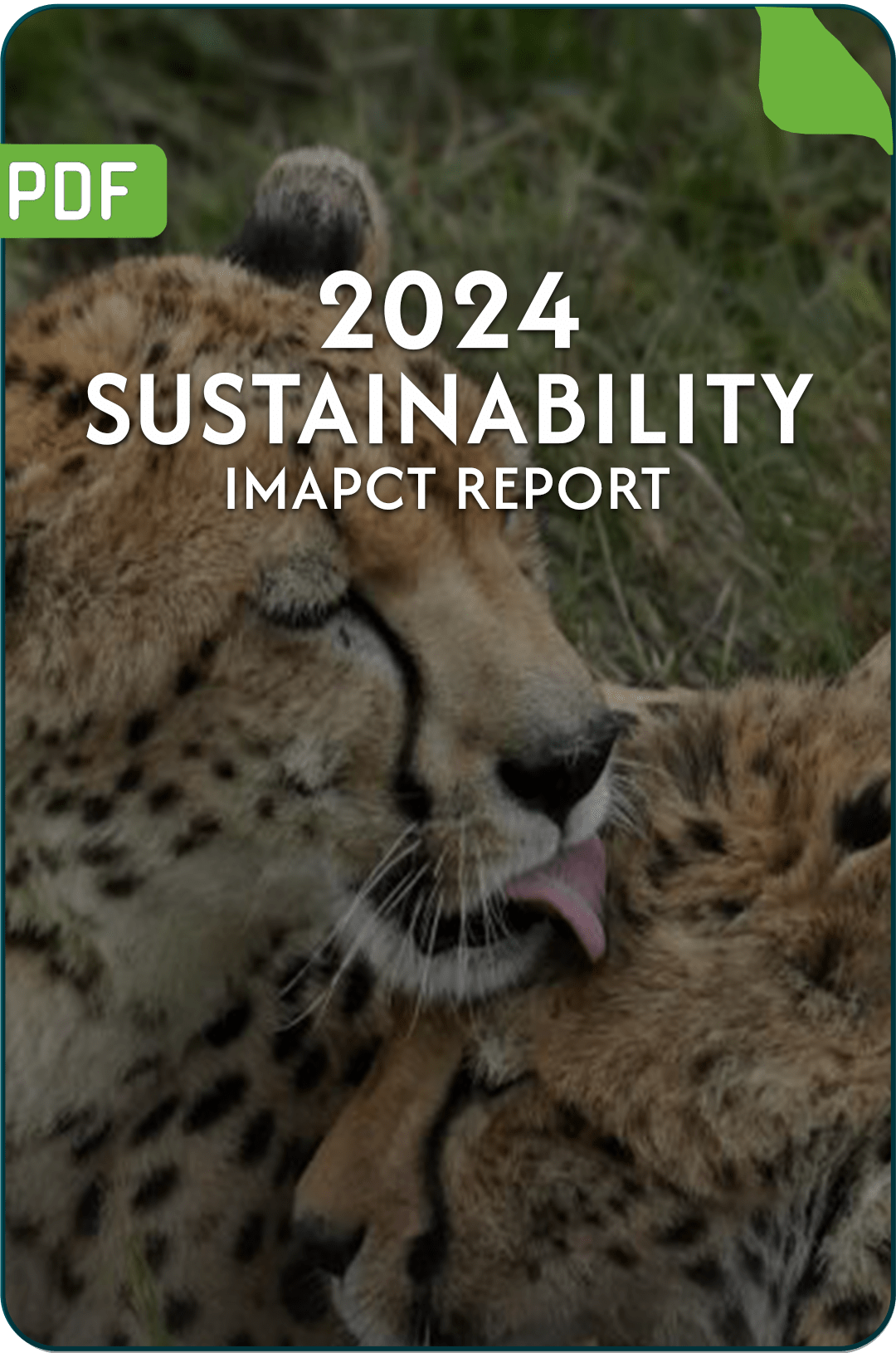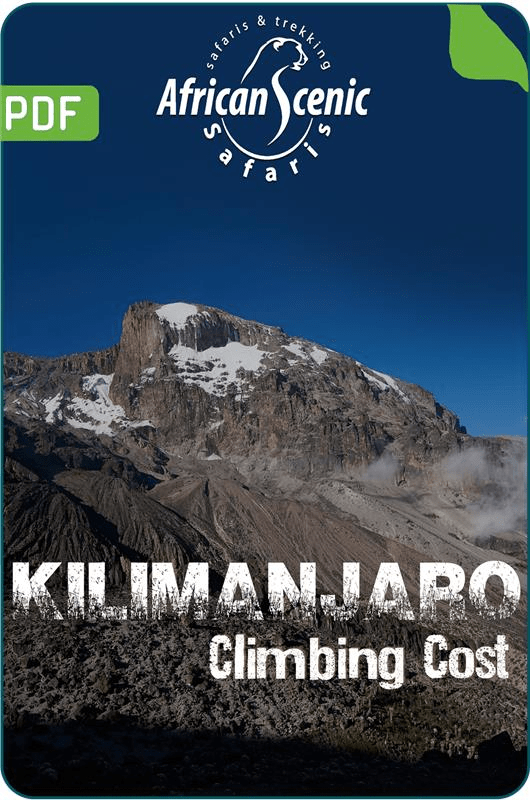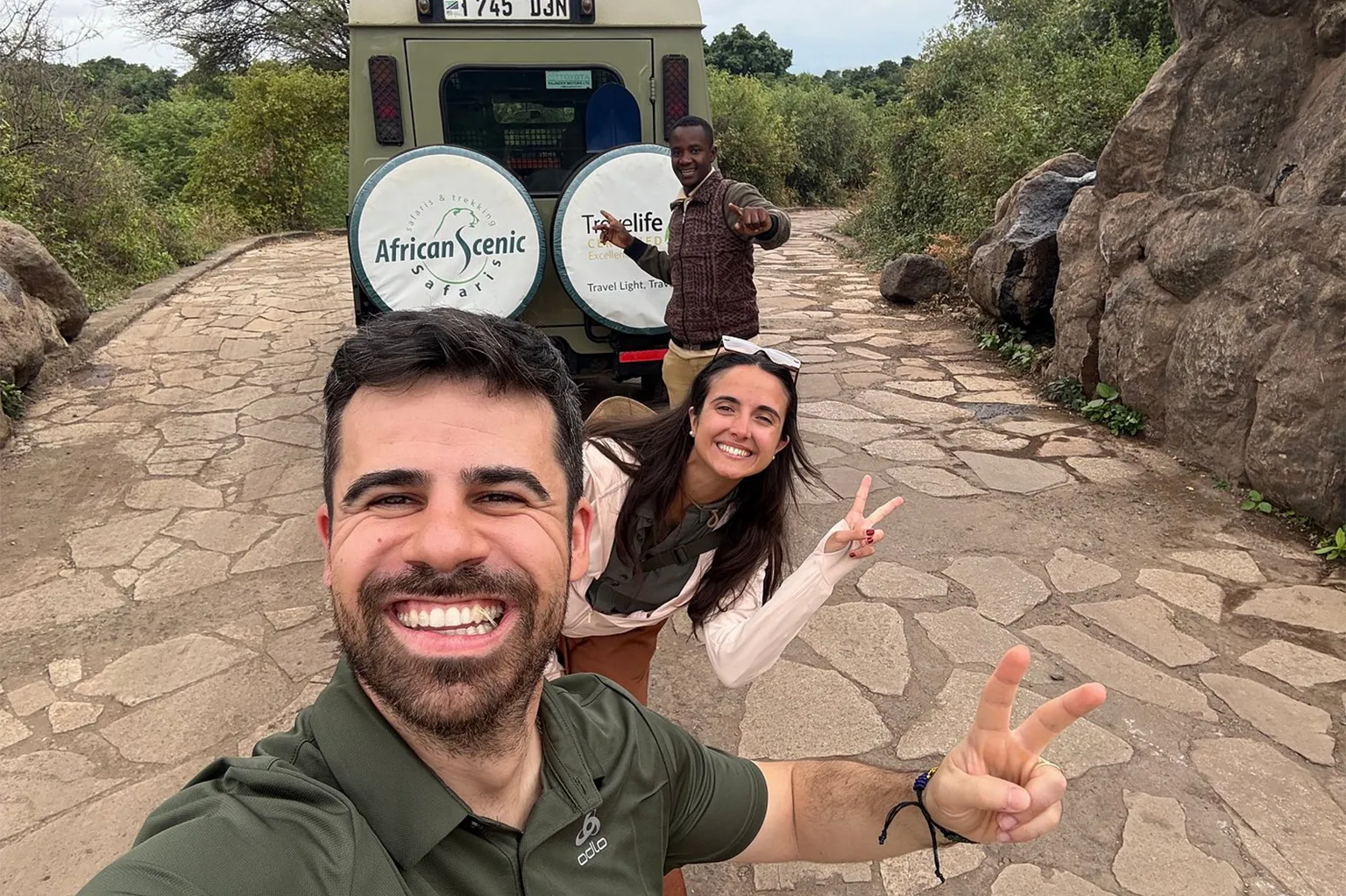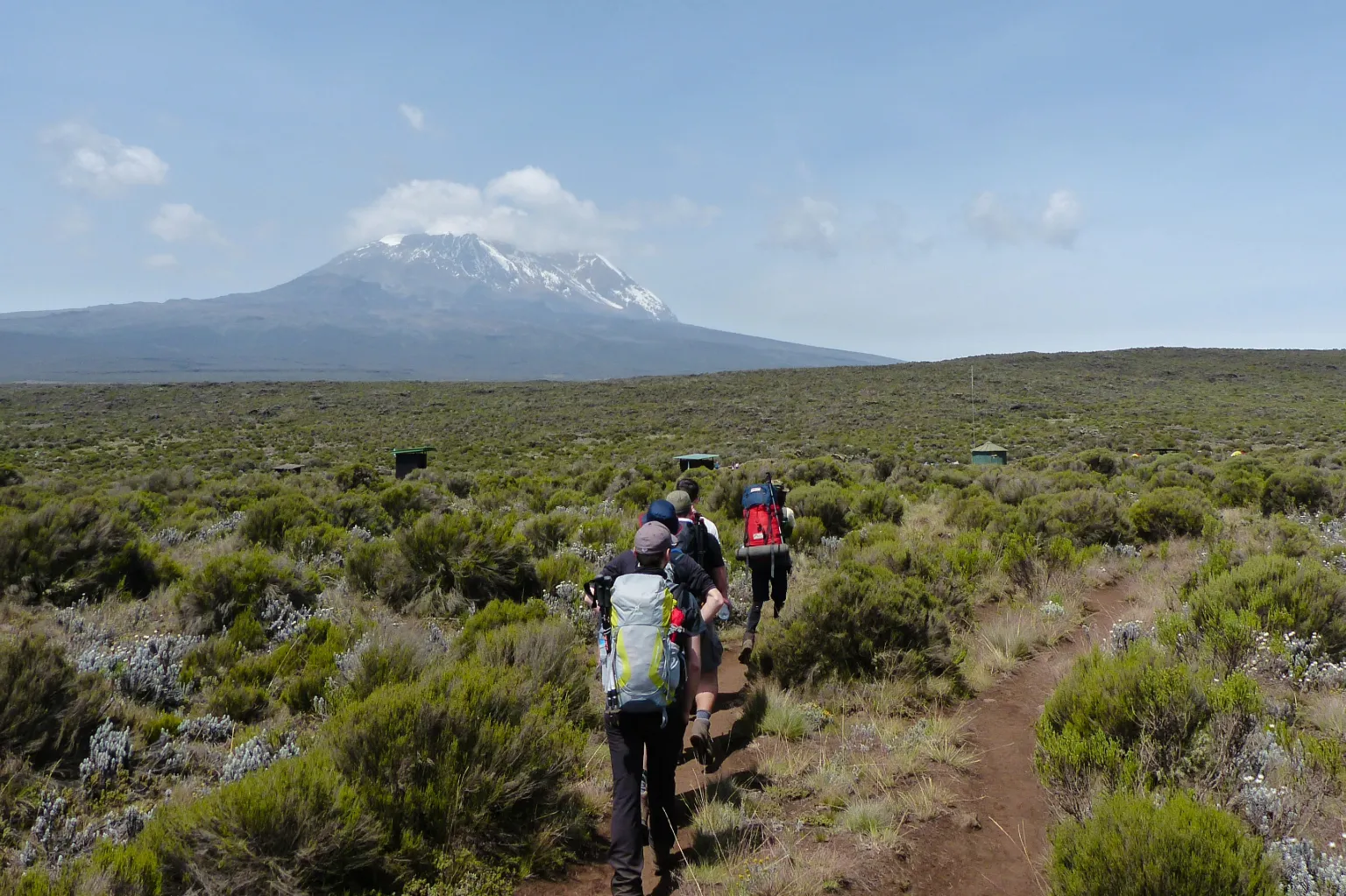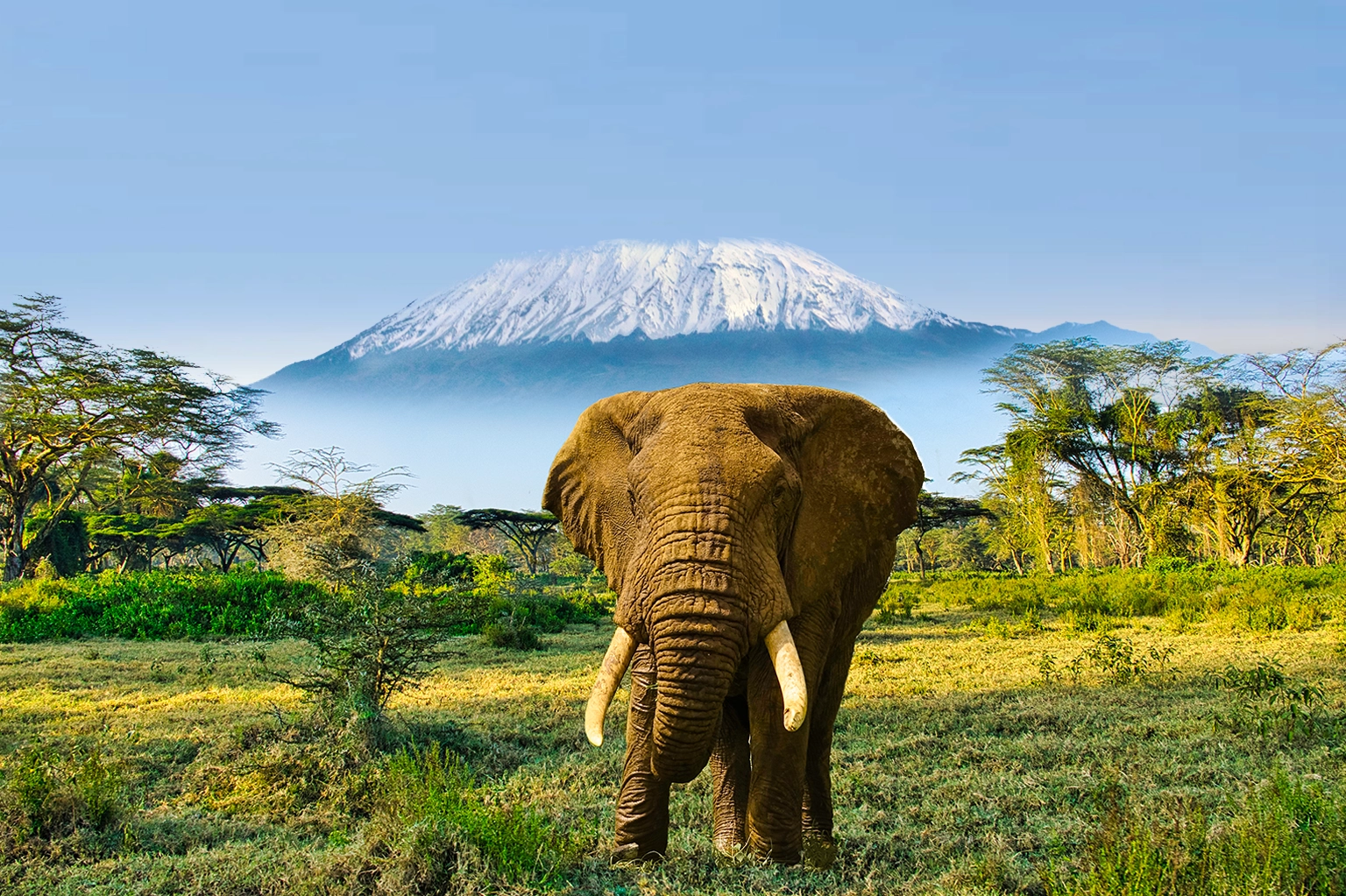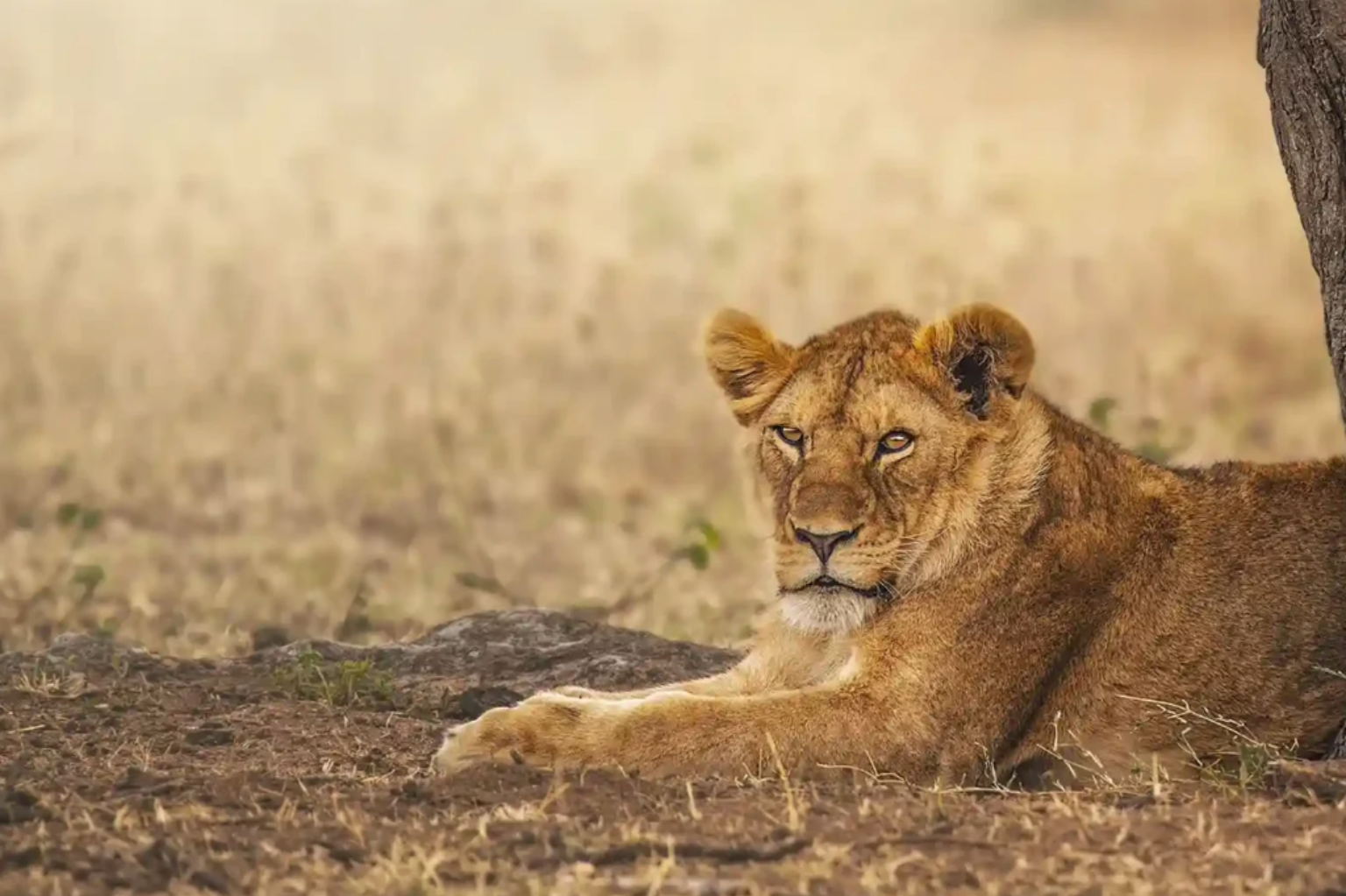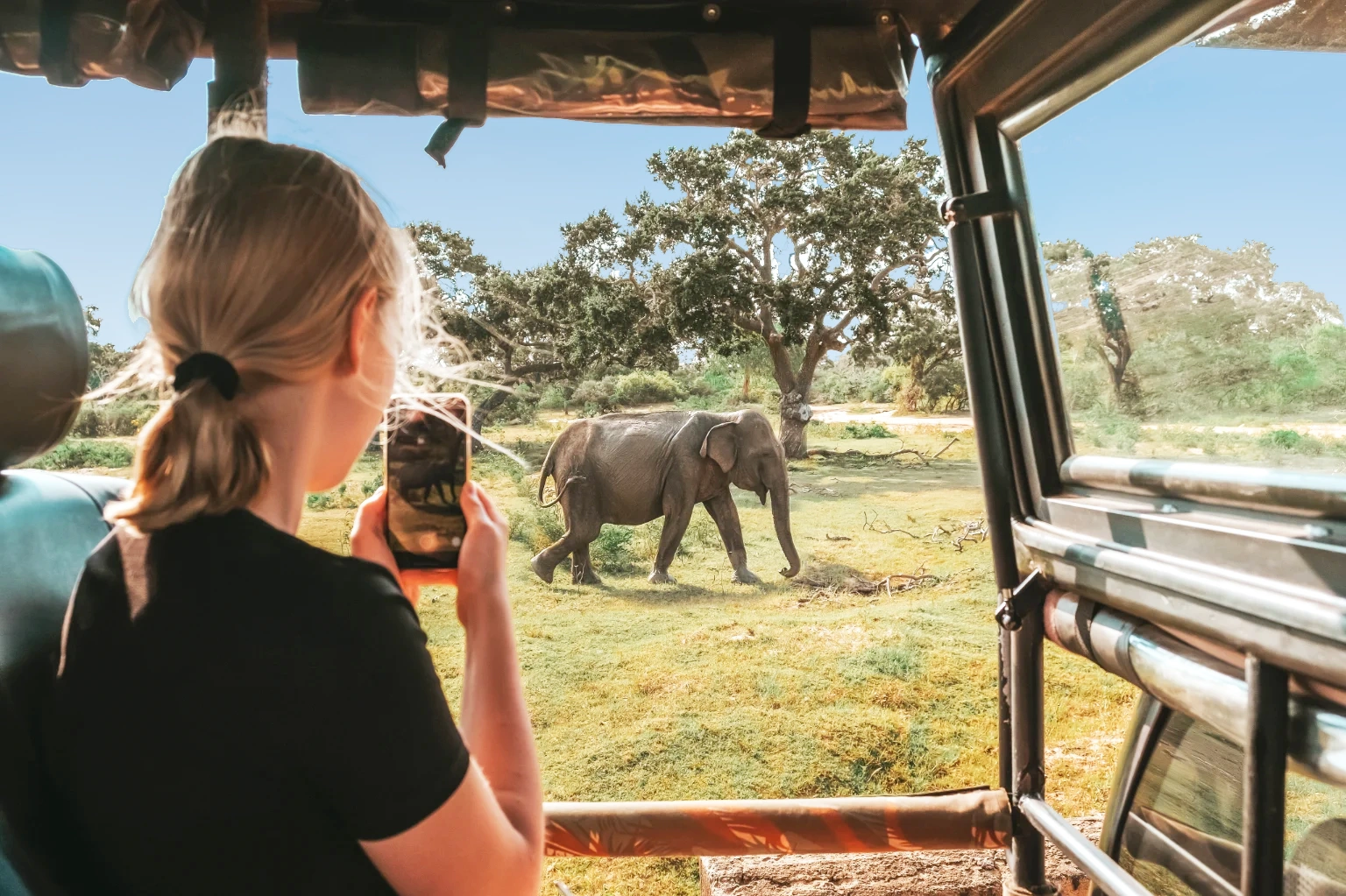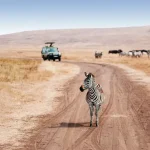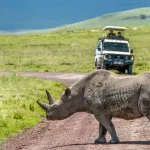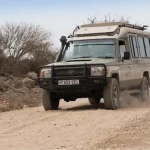Get Into The Crater With The Ngorongoro Safari Tours
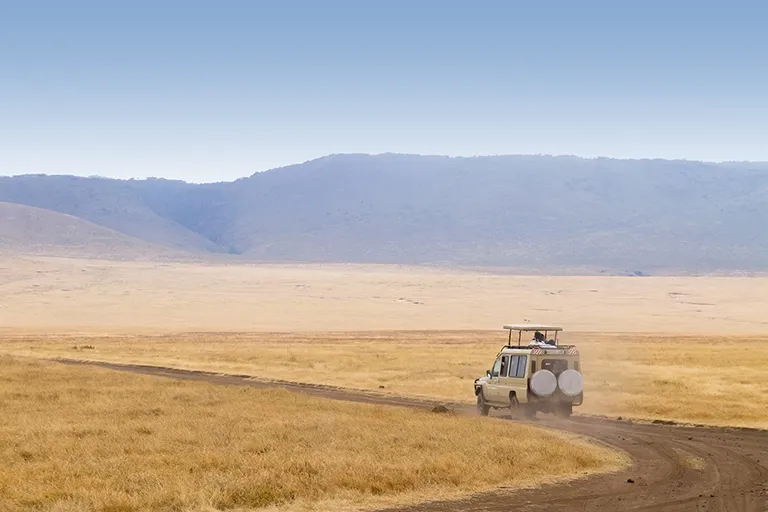
In the heart of Tanzania, the Ngorongoro Conservation Area descends to the largest unfilled and intact volcanic caldera in the world, the Ngorongoro Crater. It was made to be a UNESCO World Heritage Site because of its global conservation of biodiversity and its linkage to discoveries of human evolution. It is also considered the eighth wonder of the world.
For over a decade, African Scenic Safaris has mastered the art of guiding Tanzania Safari Tours in the Ngorongoro Conservation Area. As a Travelife-certified and KPAP-registered operator, we ensure that we align with UNESCO’s conservation goals for the crater. We provide all the in-depth information guests would love to know about the Ngorongoro Crater.
One of our guests described their first glimpse of the crater rim as a moment that left them in awe. Seeing three of the Big Five in just a two-and-a-half-hour walk surprised them.
“…. we were surprised to see elephant, giraffe and a leopard(!) as we walked the rim…”
KarenB, London UK, from Tripadvisor.
The Ngorongoro Crater Safari will give you an opportunity to see the predators hunting in broad daylight, flamingos painting the lakes pink, and the cultural heritage. This guide will give you the complete look and practical tips for making the most of your Tanzania Safari Trip.
Why Is Ngorongoro The “Garden Of Eden”?
More than 2 million years ago, volcanic activity created the Ngorongoro Crater. A caldera covering over 100 square miles was formed when the volcano erupted and then collapsed, descending to a depth of 610 meters.
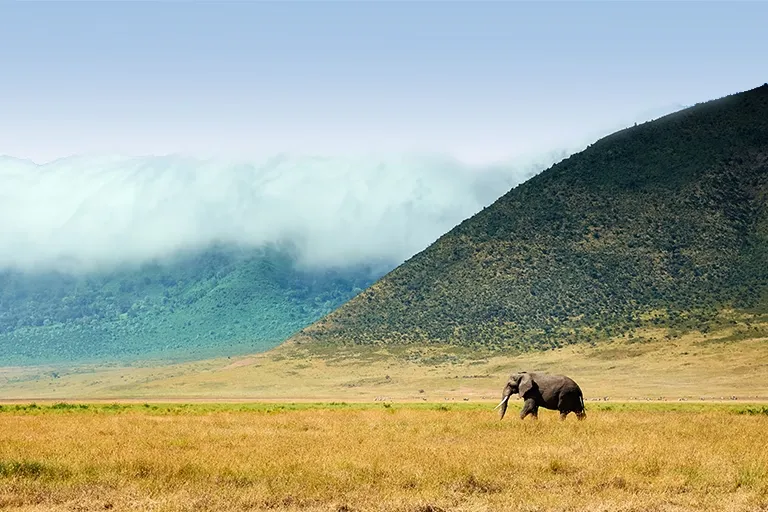
The topography and the soil fertility of the crater cause it to have a diversity of vegetation. Grasslands, high moorland, and evergreen highland forests cover the steep slopes of the crater. Open short grass plains, acacia woodland, and water lakes cover the crater basin. These guarantee the survival of wildlife living in the crater.
The Ngongoro Crater is often described as a “Garden of Eden” because of its stunning biodiversity and evidence of the remains of the earliest man. The crater contains over 25,000 large animals and over 500 bird species; spotting the “Big Five “in a single day is possible. Visitors can also witness the Great Migration from the crater.
Other features found in the crater are Lake Magadi and the Lerai forest. Lake Magadi’s water is 80% soda; it sits in the southwest part of the crater and is home to a lot of flamingos. Acacia and yellow fever trees cover the Lerai Forest.
“Every turn in the crater shows a new world.”
African Scenic Safaris tailors Tanzania Safari Packages that can allow you to experience the essence of the crater’s beauty as per your budget. Both luxury and minimum budget safaris are designed in a way that does not discredit the actual aim of your Tanzania Safari Trip.
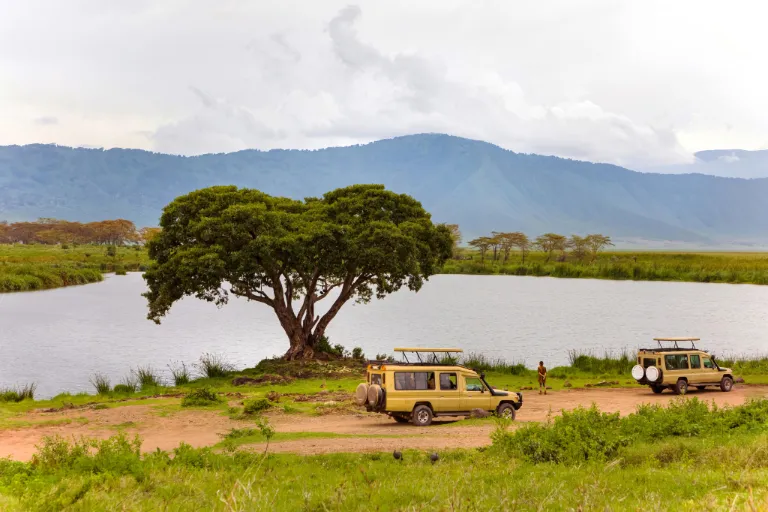
Wildlife Encounters In The Crater
Most of the animals in the Ngorongoro Crater hardly leave the crater due to its steep nature. The crater’s high concentrations of wild animals, including endangered species like rhinos and elephants, guarantee the Big Five sightings.
Due to strict steps on protecting endangered species, guests have to travel a bit of distance to see rhinos. They are mostly spotted around the Gorigor swamps. On the other hand, elephants move constantly in search of food and water, making it easy to spot them. Elephants live in the forests of Lerai and eat the acacia trees that grow there.
“Seeing rhinos up close was unforgettable.”
Ngorongoro Wildlife
Lions in the crater live in several groups, but they are very close together, which gives guests better viewing opportunities. The lion population in the crater has been going down a lot because of disease outbreaks, even though there is a lot of prey.
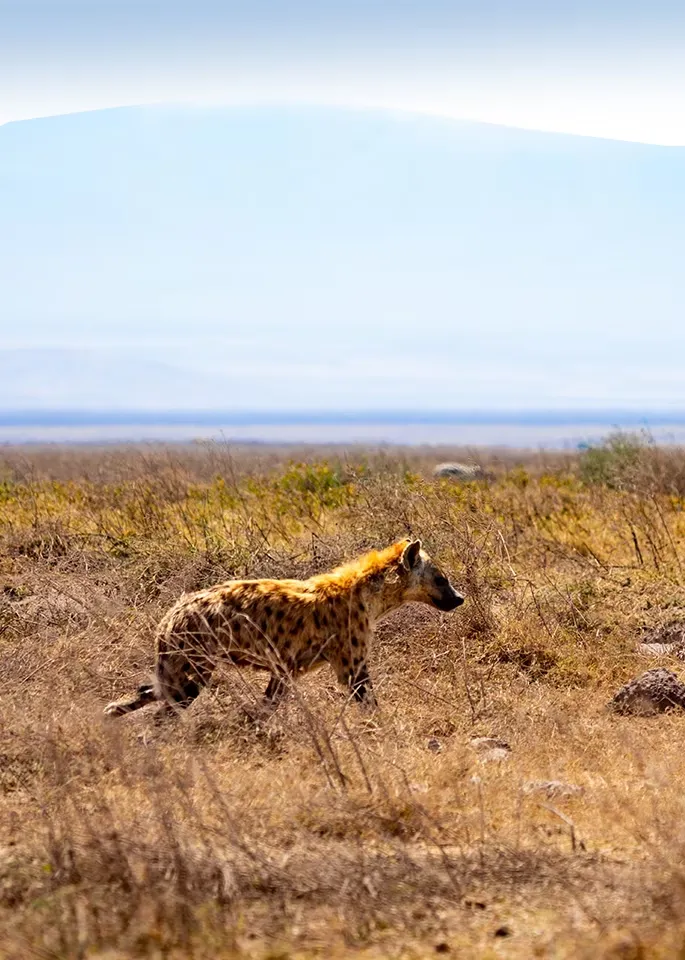
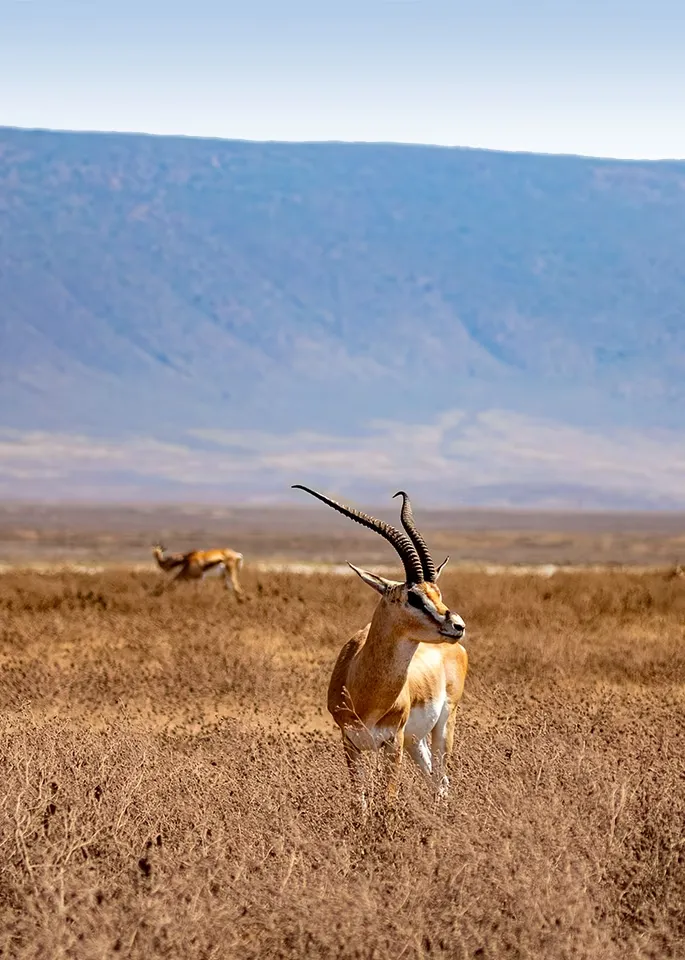
Lions and other predators like hyenas, cheetahs, and leopards are supported by the abundance of herbivores in the Ngorongoro Crater. This maintains the equilibrium between predators and prey and shows and demonstrates the effectiveness of the ecosystem.
Apart from wild animals, the crater is also rich in birdlife. Flamingos and crowned cranes are among the 500 bird species found in the crater. Thousands of lesser flamingos and a few larger flamingos call Lake Magadi home. Crowned cranes live on grasslands and wetlands. The crater also hosts seasonal migrant birds.
Ngorongoro Crater Safari is part of what many people think is the best Tour Safari Tanzania when paired with a Serengeti Safari. They are easily accessible to each other because they are both in the Northern circuit and in proximity to each other. Transportation between the two parks can be by road or air.
A minimum of 7-10 days safari is suggested to deeply explore both the Ngorongoro Crater and the Serengeti. The cost of the safari can vary depending on the season and accommodation standards. Make a booking several months before the time of your trip.
Cultural Link Of Maasai And History
The coexistence of humans and wildlife in the crater is one of the features of the Ngorongoro Conservation Area. The crater is home to the Maasai tribe, a pastoralist community that is semi-nomadic. The Maasai let their livestock graze close to wildlife because they view wildlife as part of their community.
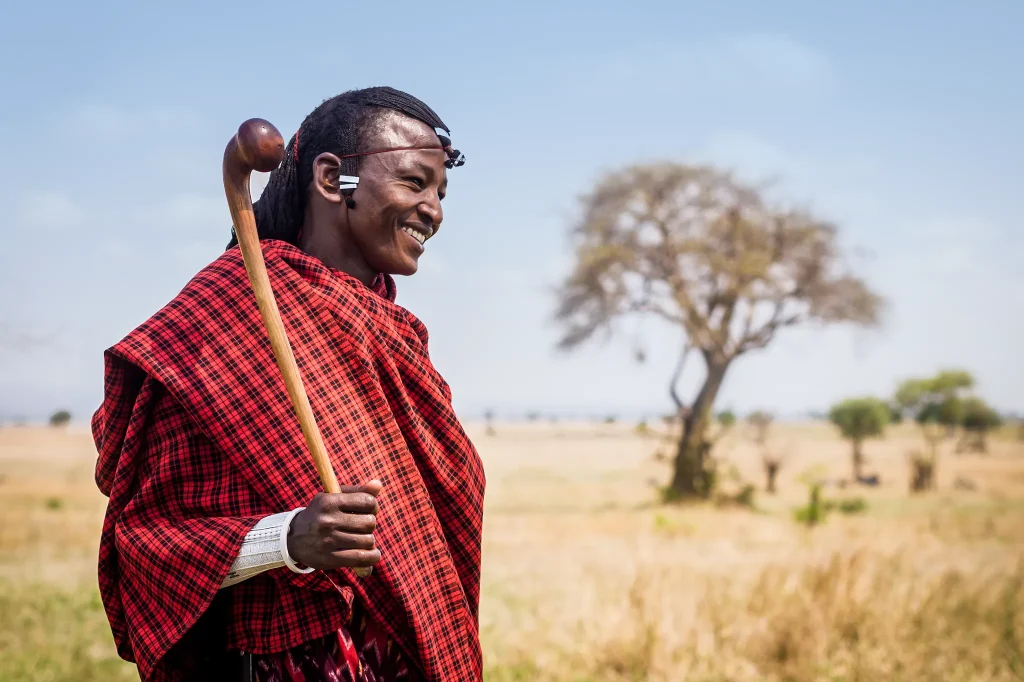
A Ngorongoro Crater Safari allows visitors to also understand human evolution by visiting the Olduvai Gorge. The gorge is named after a Maasai word, “oldupaai,” meaning a sisal plant. Dr Louis and Mary Leakey discovered the remains of the earliest man at this archaeological site. Hominid footprints that have been preserved in volcanic rock for over 3 million years can be found at the Laetoli prehistoric site, 45 kilometers south of Olduvai.
The Ngorongoro Conservation Area Authority (NCAA) balances wildlife protection with human habitation. The authority strictly forbids hunting wild animals inside the crater and allows agriculture only in specific areas.
Tanzania Safaris in the crater include trips with the purpose of cultural tourism for tourists who are interested in cultural heritage. Guests get to visit the Maasai communities, learn their culture and participate in their traditional dances. The Maasai act as guides during cultural safaris in the crater.
“The Maasai added soul to the safari”
Ngorongoro Crater Safari Packages crafted by African Scenic Safaris allow you to explore the wildlife encounters and learn the Maasai culture in a budget-friendly manner. Our packages include costs incurred during the crater safari.
Planning Your Crater Safari
When planning for Tanzania Safari Tour, especially the crater safari, one should be readily aware of the crater’s entry fees, best times to visit, and ideal safari durations. Knowing these would determine the Tanzania Safari Cost.
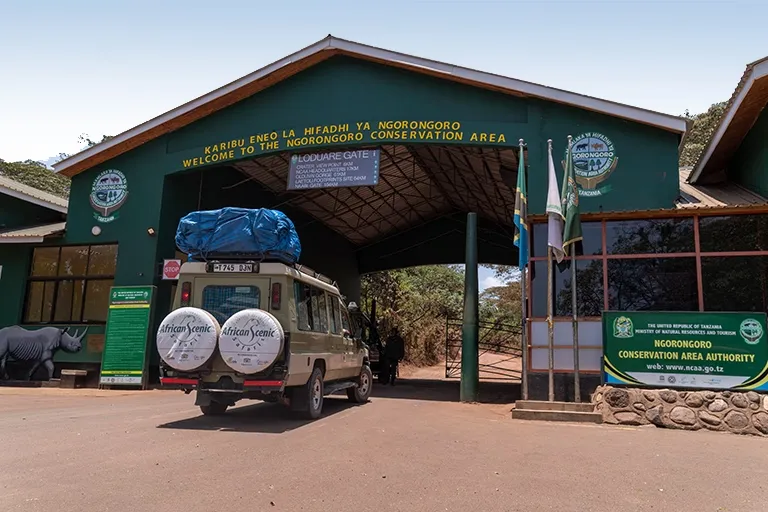
Entry fees.
Guests must pay for their entry before entering the park. The rates differ with age and citizenship. Below is a table showing the crater’s entry fees as set by the Ngorongoro Conservation Area Authority:
Age group | Tanzania Citizen (TZS) | East African Citizen (TZS) | Expatriates/residents living in Tanzania (USD) | Non-East African Citizen (USD) |
| Of or above the age of 16 years | 11,800 | 11,800 | 35.40 | 70.80 |
| Children aged 5 years and below | 2,360 | 2,360 | 11.80 | 23.60 |
| Children below 5 years | free | free | Free | Free |
Source: https://www.ncaa.go.tz/tarriffs/
Best times to visit the crater
Guests can visit the crater year-round, but we recommend specific seasons for a crater safari. If you want to have an unforgettable experience of the crater, you should consider visiting during the dry season, from June to October. It is the best time to have good sightings of wild animals as they congregate in the permanent water sources
The dry season is the most crowded time of the year in the crater; those preferring lesser crowds should consider visiting during the shoulder season. The vegetation is lush and green, providing guests with a beautiful view of the crater.
Ideal safari duration
Exploring the crater within a single day is possible, and an early morning safari would do. Even though spotting the Big Five in a single day is guaranteed, guests are advised to spend more days in the crater. A trip of 6 to 7 days allows them to witness more animals and discover more about the crater.
“Arrive early for golden light and fewer crowds”
Proper planning for a Crater Safari involves knowing what to bring on a Tanzania Safari. Please consider the following items:
Clothes to pack
When packing clothes, you have to consider different times of the day. Tanzania’s mornings and evenings feel cold, so dress in layers and wear light clothes during the day. Pack long-sleeved shirts, pants, or pajamas to protect yourself from mosquito bites at night.
Avoid packing bright clothes because they will attract bugs; instead, pack neutral-colored clothes. If you are travelling during the rainy season, you should not forget a raincoat.
Travel documents
Several essential documents shouldn’t be lacking on your arrival. These include a valid passport, visa, and vaccination certificates. You can get a visa for Tanzania through the country’s electronic visa system. Guests coming from countries where yellow fever is a risk should present their vaccination certificate on arrival.
Medications
To reduce the chance of contracting malaria, consider carrying insect repellants and anti-malarial medications. Remember to pack painkillers and any other prescribed medications you may be taking. Pack sun protection to prevent sunburn, as it is very sunny in Tanzania.
Electronic devices
Bring a camera for capturing the incredible moments and binoculars to help you view animals at a distance clearly. Carrying a charger and power banks would ensure that your electronic devices do not die while on the crater safari.
For more packing tips, check out our Safari Packing List to ensure that fully prepared for an amazing Tour Safari Tanzania.
Tips For Sustainable Travel
Going on Safari Tours Tanzania should not be only about experiencing the incredible wildlife encounters, but it should also involve having a sense of sustainability. Choosing a responsible tourism operator can help you achieve that. You can support Conservation efforts by adhering to eco-friendly guidelines given to you by your tour operator.
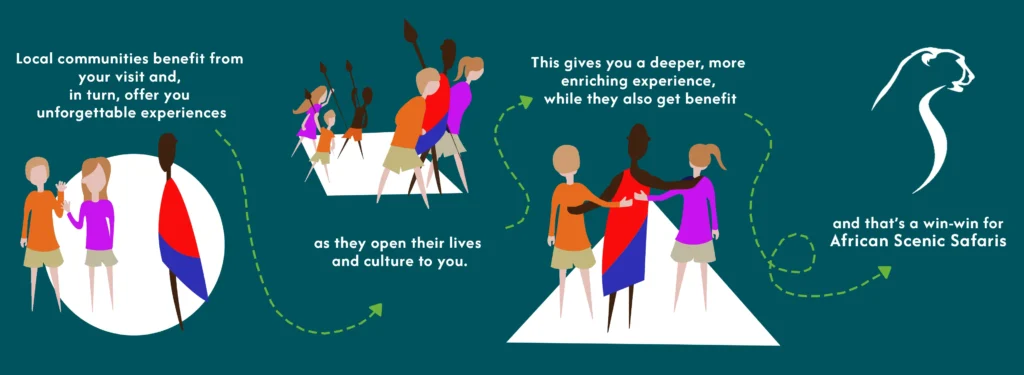
African Scenic Safaris ensures to implement sustainability, support community projects, and participate in eco-friendly practices as per the UNWTO guidelines. We advise our guests to use reusable bottles and guide them into responsible photography. Our company aims to employ local people so that they can benefit from tourism but also become ambassadors of conservation.
For more information about UNWTO tourism guidelines, Visit: https://www.untourism.int/sustsinable-development
Your visit to the crater doesn’t just bring you an incredible wildlife experience and cultural heritage alone; it helps to support communities and conservation. Tourism revenue supports the development of local communities.
A Safari Like No Other
A Tanzania Safari Trip to the Ngorongoro Crater immerses you in the beauty of the crater. It gets you to explore the unmatched wildlife, learn the cultural heritage of the community, as well history of human evolution. The beautiful landscapes and vegetation of the crater remain a therapeutic memory for a long time.
Be sure to know the seasons before planning your Ngorongoro Safari. This will help to budget your safari properly, but also know what types of clothes to pack. Make sure you have all the necessary travel documents for your admission into Tanzania before boarding the aircraft.
You can help the community and wild animal conservation by selecting a responsible tourism operator like African Scenic Safaris. Your crater safari starts here. Are you ready?


